“The goal of early childhood education should be to activate the child’s own natural desire to learn”. -Maria Montessori-
This is one of the mottos that Maria Montessori based her ever-so-popular teaching method. She designed an educational system that aims to develop integral parts of the child and helps promote peace and balance in himself and the environment.
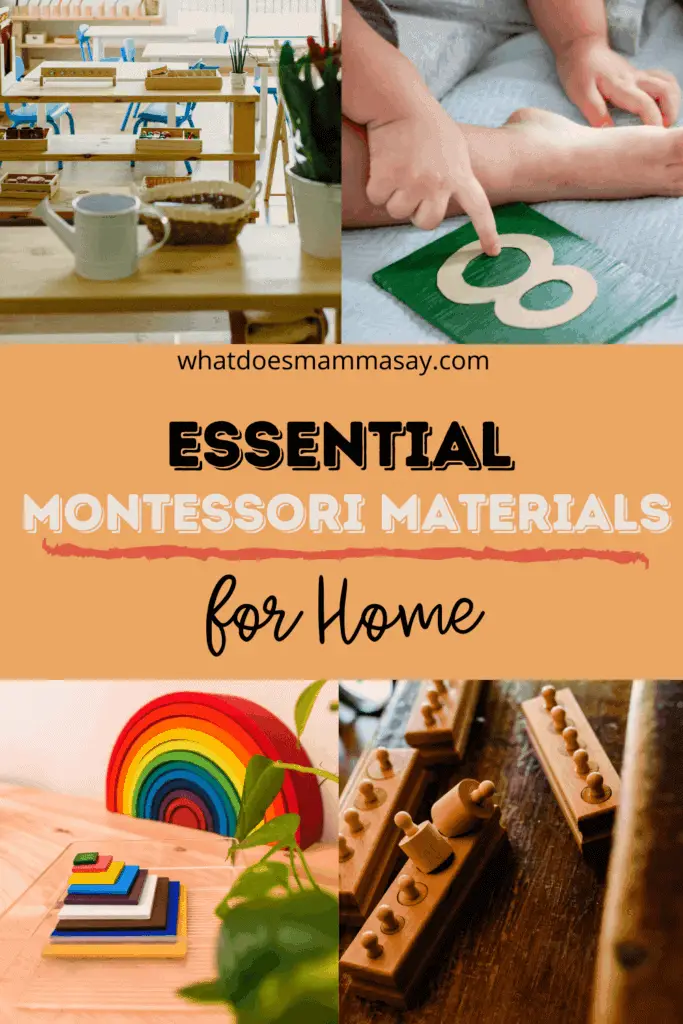
This post may contain affiliate links and I may earn a small commission when you click on the links at no additional cost to you. As an Amazon Affiliate, I earn from qualifying purchases. You can read my full disclosure here.
A Quick Overview of the Montessori method
If I could sum up the Montessori method, I’d say that it consists of the following characteristics:
-
Learning through experience.
Children learn through the process of exploring the Montessori materials available. They feel confident in their exploration because they can always observe the results for themselves whether it is a positive outcome or an error. Usually, the teacher does not interfere to avoid the child’s inhibition. The child may notice the error but does not perceive it as something negative but as something that is part of learning.
-
No age groups.
One interesting aspect of the Montessori method is that the children are not grouped based on their age. The reason behind this is to create a natural environment. In our daily life, we interact with people of all ages, so children in Montessori create a mini-society where the little ones observe the older ones and have them as a reference. The older ones are motivated to serve as a model and help the little ones and to collaborate in order to achieve more elaborate tasks.
-
Cooperation and help between children and adults is encouraged
Children are given the option to work individually or in a group. It is very important that each child is allowed to work at his own pace. Competitiveness, rivalry, or comparison between children is frowned upon.
-
A specially designed environment
The whole Montessori environment is designed to spark the child’s curiosity and appetite for exploring. All the Montessori materials are readily available to the children, at their height and presented in an attractive form that encourages free exploration. The child is an active part of the environment. The teachers do an arduous job of quiet observation and support with fair interventions. There are specialised areas where children can explore practical life, sensory intelligence, language arts, mathematics and other curricular subjects.
-
Freedom
The Montessori method understands the basic human need for freedom. Children are allowed to move freely in the classroom, the choice is theirs when it comes to the work stations, partners and timing. They learn early on, with the help of the teachers, that with freedom comes responsibility as well. Their choices have consequences.
Our relationship with Montessori
I have always been fascinated with the Montessori method so, naturally, I’ve done quite a little bit of research on this topic.
I fell in love with the Montessori materials and we’ve started looking into buying some Montessori-inspired toys so that my son could play with them at home.
When the time came to look for a kindergarten, I immediately knew where I wanted my son to go. Luckily enough, I found a Montessori kindergarten nearby which still had places available. As you could imagine, I jumped at the opportunity and enrolled him immediately.
Now, just to give you a little bit of background information on my little cheeky monkey, he is quite wary of new people, environments and activities. It takes him quite a while to adapt and start feeling confident enough to interact with people and explore.
After about two weeks, my shy boy was chirping away about his playgroup, about his colleagues (he knows all their names), singing songs he learnt there and about Alvaro and Mirela, his wonderful teachers. That’s when I knew that I’ve made the right choice and that the Montessori method is not just a myth but it is really focused on the child’s individuality.
The Montessori Kindergarten we go to has all the traditional, high-quality materials you’d expect to see here. Everything adheres to the Montessori method and tradition to the line.
Being an enthusiast and always on the lookout for Montessori toys for toddlers that I can use at home, I did a little bit of spying into what materials they use so that I could purchase and enjoy them at home too.
So, today I am going to share my list of these fantastic Montessori toys for toddlers with you. These materials are the very ones that are used in a Montessori environment and, as you will notice, they tend to be very simple, made of natural materials (wood most often, metal, glass, clay, rock or textile material), based in reality and they focus on one skill.
Montessori Materials for Gross Motor Skills
Gross motor skills enable us to perform everyday tasks like standing, walking, jumping, riding a bike, swimming or kicking a ball. Everything that involves the large muscles of our body in coordination with our neurological system has to do with the development of the gross motor skills.
1. Pikler Triangle

Pikler triangles are extremely popular climbing toys for toddlers and with good reason. As with all Montessori toys, it is made of high-class polished birch plywood, which is very strong and flexible.
Considering that all kids have a natural tendency for movement, climbing and exploring, the Pikler Triangle is the perfect toy to refine agility, reaction skill and overall gross motor skills.
It is foldable so it doesn’t occupy much space and it can be used both indoors and outdoors.
2. Wooden Balance Board

A characteristic of Montessori toys is their simplicity which encourages children to come up with various uses, in other words, open-ended play.
The Wooden Balance Board is perfect for practising balance and for exercising the muscles responsible for correct posture, which, considering how many hours we spend slouched in front of a computer nowadays, is vital.
Considering that the Wooden Balance Board is appropriate for all ages (adults love it too), you can rest assured that it’s a good investment and that your child will never outgrow it.
But what I love best about this board is its potential for open-ended play. For children, this is not just a balance board, it can be a car ramp, a bridge, a comfy lounge chair, a swing, a tunnel, an impenetrable fort, a boat. The sky and their imagination is the limit.
And because it has been made of the highest quality materials the whole family will enjoy the Balance Board for many years.
3. Clever Cube Puzzle

Most kids love the challenge of a puzzle and the feeling of accomplishment once they solve one. So, without a doubt, your little one will love this oversized Clever Cube Puzzle.
It is made up of 7 pieces that need to be arranged in order to form a cube. There are 240 possible ways in which the puzzle can be solved challenging children to come up with new ways of building the cube.
The Clever Cube Puzzle is a fantastic toy for developing gross motor skills as kids get to lift the pieces, arrange them in different ways, climb or jump off them.
It is also a great way for children to improve their spatial awareness which is important for a good sense of balance, dexterity and flexibility. In order to build the cube kids will have to make full use of their logic skills and exercise patience when things get challenging.
What makes the Clever Cube Puzzle a great Montessori material is the fact that it provides multiple ways in which it can be used. Besides making the cube it can also be used as a little sofa, a table, a bridge, stepping stones, you name it. The limit is the little ones’ imagination.
Montessori Materials for Fine Motor Skills
Fine motor skills refer to the little muscles in the hands and fingers that work in harmony with the eyes in order to enable us to do tasks like grasping small objects, writing, dressing ourselves, eating etc.
1. Knobbed Cylinders

You will most likely find Knobbed Cylinders in all traditional Montessori schools. Although they look plain, it’s a fantastic toy for teaching children visual discrimination of high and low, big and small.
Children will get to fully practice their fine motor skills by grasping the knobs which vary in height and diameter. Thus, unknowingly, they will prepare themselves for writing by developing the coordination needed to hold and use a pencil.
Besides practicing visual discrimination and fine motor skills, the Knobbed Cylinders will also help children develop logical reasoning, their observation skills and help them draw conclusions based on what they notice.
The pack contains 4 sets of cylinder blocks and 18 cylinders of different sizes.
2. Montessori Screw Driver Board for Kids

What could provide better practice for the fine motor skills and hand-eye coordination than using a screwdriver?
This Montessori Screw Driver Board for kids comes with 5 different types of screws, a screwdriver and an Allen wrench.
It is a great Montessori material for teaching kids practical life skills, patience and increasing concentration.
3. Montessori Ball Tracker

The Ball Tracker consists of 4 brightly coloured wooden balls and the wooden frame.
The balls are small enough for little hands to be able to grasp them easily but big enough not to pose a choking hazard.
The concept is pretty simple: kids will grasp the balls and put them on the frame. They will watch the balls as they gradually move from left to right to the bottom of the frame.
The main idea behind this Montessori material is to provide children with the visual concept of reading and writing from left to right. Additionally, the Montessori Ball Tracker provides early childhood development in the areas of hand/eye coordination, hand strength, and finger dexterity.
4. Montessori Coin Box

This fantastic toy comes with 5 blue thick wooden coins, a pull out drawer and the box itself.
Even though simple, the Coin Box is a great material for developing fine motor skills and hand-eye coordination by grasping the coins and using hand and fingers control to insert the coins in the slot.
But what I love about this toy is that it teaches children the concept of the permanent existence of objects. Meaning if an object disappears from our line of sight it doesn’t mean that it stops existing.
Montessori Materials for Life Skills
As they grow children yearn to gain independence and start doing things for themselves. One important characteristic of the Montessori method is that it teaches kids important life skills like dressing themselves, cleaning their dishes after eating, pouring their water in a cup, cleaning their environment, feeding themselves, personal hygiene and so on.
1. Dressing Board

One step to independence for our little monkeys is the ability to dress and undress by themselves. This awesome dressing board comes with 6 different pieces that will teach kids to use a zip, snaps, buttons, buckles, to lace and to tie.
It is a highly effective material for encouraging children to start dressing themselves, not to mention that the Dressing Board refines fine motor skills.
The Dressing Board is made up of high-quality materials, the buttons, for example, are firmly sewn in, the zipper slides up and down easily. Each piece has a vibrant colour making the set visually appealing for children.
2. Wooden Detachable Cleaning Set

Kids learn by imitation and if your child is anything like mine then you clean the house with him clinging to the broom or hoover. So why not buy them a kid-sized realistic cleaning set perfect for little helpers.
The set contains wooden pretend play broom, mop, duster, brush, and organizing stand.
It is a fantastic way of encouraging the little ones to pitch in to maintaining a clean house. Also, they will learn which cleaning items work best in different areas in the house. The Cleaning Set is a toy that besides teaching kids an important life skill, it also takes them away from screens and encourages hands-on and open-ended play.
3. Montessori Brushing Teeth Model

Many parents struggle with getting their kids to brush their teeth. Good dental hygiene is important for overall health. However, most children resist cleaning their teeth or haven’t grasped the proper technique to brush their teeth yet.
That’s why this Brushing Teeth Model is the perfect tool to help children practice correct flossing and brushing their teeth. It is also a good way of turning this dreaded activity for some kids into something fun.
The set includes 1 wooden tray, the teeth model, a toothbrush and dental cognitive cards.
4. Stainless Steel Kids’ Eating Utensil Set

When my toddler started on solids and using eating utensils I avoided giving him plastic ones for several reasons: they tend to retain odours, they stain easily, it degrades over time and plastic tends to retain more bacteria. So I opted for stainless steel silverware. My boy was excited that he had similar utensils to what mommy and daddy were using and at the same time they were small enough for him to successfully use them.
This high-quality set contains 2 spoons, 2 forks and 1 butter knife. The spoon is small enough to fit small mouths and deep enough to hold soup without spilling it. The knives have non-serrated blades which make them safe for kids but will teach them how to cut soft food or spread peanut butter on a slice of bread. The fork has rounded tines which again makes it safe but still effective to pick food up.
5. Mini Ceramic Pitcher

This mini ceramic pitcher is perfect to teach kids how to independently pour liquid without spilling it and because it is made of fragile material, they will also learn how to handle it.
It is light enough for a toddler to be able to handle it successfully.
Montessori Materials for Cognitive Thinking Skills
Cognitive thinking skills are the mental processes that have to do with our ability to think, learn, read and write, pay attention, process information, solve problems, reason etc.
1. Montessori Book Collection
We know how important reading is to the development of our children. It promotes language development, literacy skills, better school performance, self-confidence, general knowledge not to mention family bonding time.
So, a Montessori library for your little one is a must. But what books should you buy that are in line with the Montessori method? Worry not! Here is a list of 17 of the Best Montessori Books for your Child’s Bookshelf.
2. Sandpaper Letters

Sandpaper letters are found in all Montessori schools. The reasons why sandpaper letters are so popular are because they stimulate 3 of the 5 senses: tactile (children trace the letters with their fingers), auditory (as they trace the letters they say the letter sound) and visual (children see the shape of the letter clearly).
By tracing the letters in the style and direction in which it is written, the child forms muscle memory that will help him start writing later on.
There are several options of sandpaper letters, from uppercase and lowercase print letters to cursive letters.
3. Sandpaper Numbers

If the sandpaper letters are so effective then why not use the same method for learning numbers?
Children will use these sturdy, lightweight sandpaper tablets to trace the numbers with the tip of their fingers thus gradually learning how to write them.
4. Tree Puzzle

Puzzles are great tools for developing emotional skills, cognitive skills, and physical skills. No wonder they are a common Montessori material.
Besides all the other benefits (improving spatial awareness, fine motor skills, hand-eye coordination, problem-solving etc) this Tree Puzzle will help children increase their power of observation and learn about the parts of a tree.
5. Montessori Rainbow Stacker

My list of Montessori materials for toddlers wouldn’t be complete without the famous rainbow stacker.
The vibrant Rainbow will teach very young children colours, develop their fine motor skills by stacking the blocks and their observations skills as the blocks vary in size, length and colour.
For older children, the Montessori Rainbow Stacker offers unlimited creative play options. It’s not only a rainbow but it can also be a tunnel, a maze, a butterfly, a flower and literally anything their imagination can come up with.
The pack includes 6 pieces of colourful stacking blocks made of high-quality material.
So, these are the Montessori materials that are used in my son’s classroom and that can also be used at home. What is your favourite one? Let me know in the comments section below and if one of your friends is looking for Montessori materials feel free to share this post with them.
We share all of our ideas, articles, activities with our children, important information we come across on our Facebook group Learning Activities for Kids. Join us and other like-minded parents and make parenthood easier!
Learning activities for kids
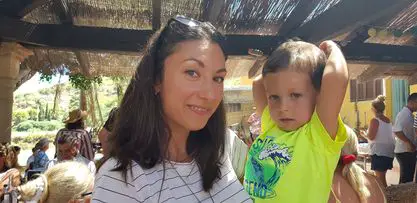
Mom of two wonderful children, dedicated teacher and book lover.
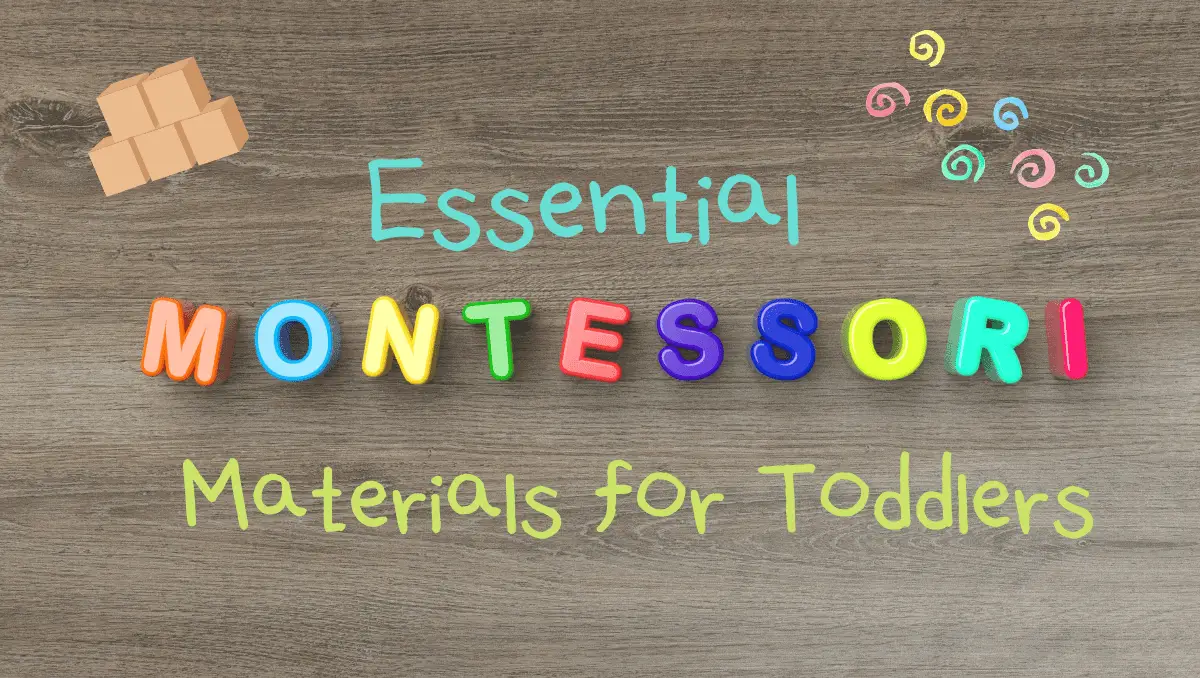
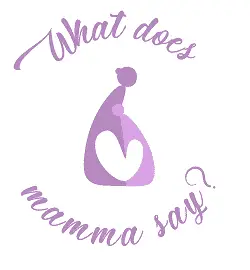

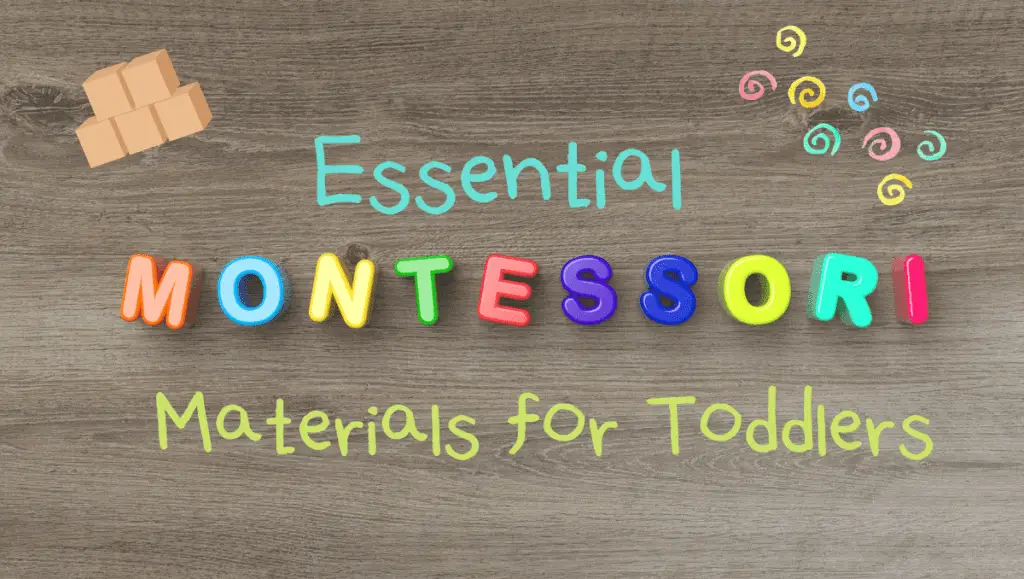
















I’ve always been interested and curious about the Montessori method, I’ve been thinking about what kind of school to put my toddler (just 1.5 years ago) in when its time for her. I’ve heard both pros and cons of it, but myself not growing up in a Montessori environment, would be interesting to expose myself to. This is a great informational post!
My son would love the screwdriver box. What a great idea!
I love that clever cube stacker for my kids! And I enjoyed reading about Montessori teachings. Very cool.
Thank you for sharing what Montessori is. I never truly understood the difference.
What an abundance of incredible information! My kids are older, but I will definitely share this with some friends with younger kids.
These are some great ideas for materials. I love Montessori learning.
I like the teeth model! A great way to encourage kids to brush their teeth! I think my daughter would love playing with all of these though.
I love the Montessori method of teaching. These are great tools.
My son went to a Montessori preschool and we enjoyed the learning methods and tools they had.